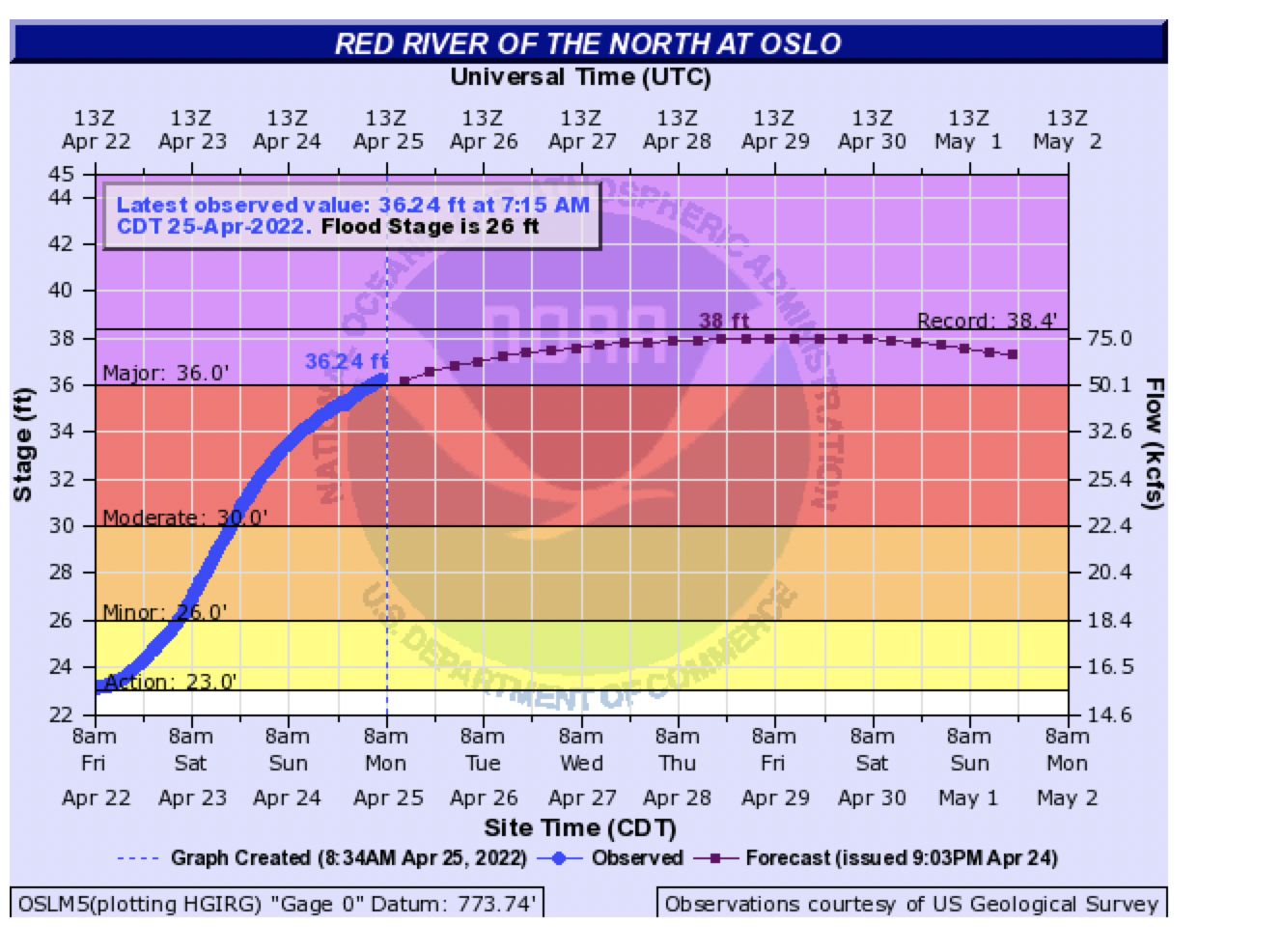Ranchers Battle Back-to-Back Blizzards, Now Near-Record Flooding Blankets the East, Yet North Dakota Still Isn't Drought-Free
AgDay 04/22/22 - ND Calving Update KFYR
Farmers and ranchers across western North Dakota and Montana were staring at a bleak drought picture for a second consecutive year just a few weeks ago. The weather took a sharp turn with a blizzard Easter week, and now more snow and torrential rains are causing flooding across areas of North Dakota.
While moisture conditions have improved a little too much in some areas, USDA meteorologist Brad Rippey says the drought gradient has sharpened. The wet areas have gotten wetter, while many of the dry areas, including the central and southern Plains, have actually gotten drier.
Back to back killer April blizzards…
(For those never experiencing one.) pic.twitter.com/edhxZSAC8A — WC Mckenzie (@longXranch) April 24, 2022
North Dakota has seen more moisture in two weeks than some areas have seen in two years, but overall, the state isn’t free of drought just yet.
“For North Dakota, the April 12-14 blizzard was particularly extreme, with widespread 1 to 2½-foot snowfall totals, winds above 60 mph, and multiple days below 10°F in the storm’s wake, says Brad Rippey, USDA meteorologist. It was a very unusual event, even for North Dakota in April. And, of course, it was followed within a few days by the April 17-18 snowfall and then last weekend’s powerful storm.”
The storm this past weekend made it extremely difficult for ranchers who had cows in the middle of calving. Ranchers across western North Dakota and eastern Montana are exhausted, as three back-to-back blizzards has bade calving season especially challenging this year, and livestock losses are still unknown.
"It was really stressful on the cows and the calves,” says Carrie Roth, a producer in Mott, North Dakota told AgDay affiliate KFYR before this past weekend's blizzard. “Calves are getting sick. Cows are all mixed up from being confined and just it's just been a challenge I guess getting kind of back on track with everything.”
KFYR also spoke to Julie Schaff Ellingson with the North Dakota Stockmen’s Association. After the first storm, Ellingson was also concerned about how livestock losses could mount as ranchers found more cattle and calves buried in by the snow.
“In many areas there are huge drifts and so livestock that maybe perished might be covered in snow,” Ellingson told KFYR. “We have to wait for some time and maybe for some snow to melt reveal some of those losses in many areas that are still inaccessible because of that incredible drifting of snow.”
Power lines falling like dominos in western North Dakota today! #plant22 pic.twitter.com/4wzzHQSNTq — Duran Vigesaa (@DuranVigesaa) April 24, 2022
The videos on social media from this past weekend’s storm showed powerlines falling like dominoes. North Dakota experienced blizzard conditions in the western part of the state and more than 4 inches of rain in the east.
“In eastern North Dakota, where the latest storm brought heavy rain, near-record flooding will occur over the next few days, north of Grand Forks toward the Canadian border,” says Rippey. “The Red River at Oslo, Minnesota, should crest later this week very close to the record set on April 1, 2009.”

How can an area so desperate for moisture go to near-record flooding in such a short period of time? Rippey says it’s a combination of heavy rainfall and snowmelt. The two factors collided, followed by the flooding across the area.
“The flooding in the Red River Valley and environs is largely due to the recent rainfall, amounting to as much as 2 to 3½ inches, which fell on partially frozen soils, maximizing runoff. In addition, the last of the snow melted during the storm, adding a bit more runoff and effectively becoming a 3- to 5-inch event,” says Rippey.
The moisture has been a mixed bag for producers across the state. While many needed the moisture, it came with extreme conditions. Even with all the flooding and snow, Rippey says the state still isn't drought-free.
“It’s hard to believe, but there is some lingering drought in western North Dakota,” he says. “Snow from the April 12-14 blizzard blew into massive drifts, minimizing the amount of moisture that stayed on - and melted into- open fields. Although the situation continues to further improve in western North Dakota with each passing storm, it will take time to replenish the soil moisture profile and for drought-damaged rangeland and pastures to fully recover.”







